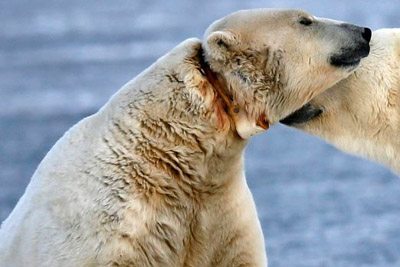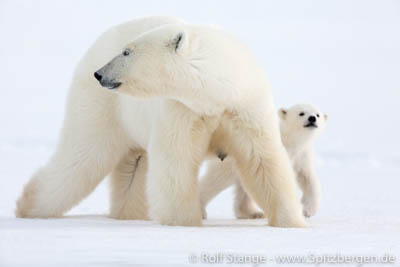-
current
recommendations- Liefdefjord
New page dedicated to one of Spitsbergen's most beautiful fjords. Background information and many photos.
- New Spitsbergen guidebook
The new edition of my Spitsbergen guidebook is out and available now!
- Liefdefjord
New page dedicated to one of Spitsbergen's most beautiful fjords. Background information and many photos.
Seitenstruktur
-
Spitsbergen-News
- Select Month
- April 2024
- March 2024
- February 2024
- January 2024
- December 2023
- November 2023
- October 2023
- September 2023
- August 2023
- July 2023
- June 2023
- May 2023
- April 2023
- March 2023
- February 2023
- January 2023
- December 2022
- November 2022
- October 2022
- September 2022
- August 2022
- July 2022
- June 2022
- May 2022
- April 2022
- March 2022
- February 2022
- January 2022
- December 2021
- November 2021
- October 2021
- September 2021
- August 2021
- July 2021
- June 2021
- May 2021
- April 2021
- March 2021
- February 2021
- January 2021
- December 2020
- November 2020
- October 2020
- September 2020
- August 2020
- July 2020
- June 2020
- May 2020
- April 2020
- March 2020
- February 2020
- January 2020
- December 2019
- November 2019
- October 2019
- September 2019
- August 2019
- July 2019
- June 2019
- May 2019
- April 2019
- March 2019
- February 2019
- January 2019
- December 2018
- November 2018
- October 2018
- September 2018
- August 2018
- July 2018
- June 2018
- May 2018
- April 2018
- March 2018
- February 2018
- January 2018
- December 2017
- November 2017
- October 2017
- September 2017
- August 2017
- July 2017
- June 2017
- May 2017
- April 2017
- March 2017
- February 2017
- January 2017
- December 2016
- November 2016
- October 2016
- September 2016
- August 2016
- July 2016
- June 2016
- May 2016
- April 2016
- March 2016
- February 2016
- January 2016
- December 2015
- November 2015
- October 2015
- September 2015
- August 2015
- July 2015
- June 2015
- May 2015
- April 2015
- March 2015
- February 2015
- January 2015
- December 2014
- November 2014
- October 2014
- September 2014
- August 2014
- July 2014
- June 2014
- May 2014
- April 2014
- March 2014
- February 2014
- January 2014
- December 2013
- November 2013
- October 2013
- September 2013
- August 2013
- July 2013
- June 2013
- May 2013
- April 2013
- March 2013
- February 2013
- January 2013
- December 2012
- November 2012
- October 2012
- September 2012
- August 2012
- July 2012
- June 2012
- May 2012
- April 2012
- March 2012
- February 2012
- January 2012
- December 2011
- November 2011
- October 2011
- September 2011
- August 2011
- May 2011
- April 2011
- March 2011
- February 2011
- January 2011
- December 2010
- November 2010
- September 2010
- August 2010
- July 2010
- June 2010
- May 2010
- April 2010
- March 2010
- February 2010
- November 2009
- October 2009
- August 2009
- July 2009
- June 2009
- May 2009
- April 2009
- March 2009
- February 2009
- January 2009
- December 2008
- November 2008
- October 2008
- August 2008
- July 2008
- June 2008
- May 2008
- April 2008
- March 2008
- February 2008
- April 2000
- Select Month
-
weather information

| THE Spitsbergen guidebook |
Home →
Daily Archives: 26. October 2015 − News & Stories
Male polar bear injured by scientific collar
Every year, a large number of polar bears is sedated and marked by scientists in various parts of the Arctic. Samples are taken and some of the bears are equipped with collars that have satellite transmitters to follow their journeys. This is usually only done with female polar bears, as the males have a neck too strong and thick to mount the collars, which would be lost quickly or hurt the bear and even cause difficulties while swallowing food and breathing. It has so far been commonly assumed in public that only female polar bears are marked this way and collars are generally not attached to male polar bears.
As it turned out recently, reality may be different, possibly already for years. Near Kaktivik in Alaska, on the coast of the arctic Beaufort Sea, a male polar bear wearing a collar has been seen and photographed. The collar is cutting into the skin, causing visible injury and most likely pain.
It is believed that the bear has been sedated and marked by scientists in Canada. it is said that male polar bears have been equipped with collars already for some time on an experimental basis. The collars are supposed to drop off automatically after a while, which may be half a year. It is possible that this does not always work in time. It is also possible, actually quite likely, that polar bears can put on a lot of weight in short time when they have access to large amounts of food, for example when a dead whale is stranded on the beach. On the arctic coasts of Canada and Alaska, polar bears sometimes find whale carcasses from indigenous hunting near Inuit settlements. This is unpredictable, according to relevant authorities. These events do indeed not occur on regular intervals, but they are well known and not rare, so they have to be expected and accounted for at any time.
In the USA including Alaska, the United States Fish & Wildlife Services (USFWS) is the authority responsible for managing and protecting marine wildlife including polar bears. According to the USFWS, the polar bear is monitored, but resources are not available to help it. Maybe motivation to take action is limited as the bear received the collar most likely in Canada.
The actual case seems to have been known locally already for months and it is now getting public attention. Interested individuals are approaching the USFWS, adding pressure to help the bear and release it from the collar. More about the present discussion, including contact details of relevant authorities, on the Facebook-page Protect the Polar Bear. Morten Jørgensen from Denmark has taken initiative. Morten is also the author of the book Polar Bears on the edge, where scientific treatment of polar bears is discussed critically.
Scientific sedation, examination and marking of polar bears is generally a traumatic event for the animals concerned, not to mention cases where female bears with cubs are treated this way. See also news posts Polar bear dead after anaesthetisation by scientists (II) and Polar bear found dead in Petuniabukta had been anaesthetised for scientific purposes on this website.
Organizations such as WWF and Polar Bears International are supporting scientific work on polar bears including satellite collars. The discussion about risks of this work is not new, but has not reached the general public yet.
Male polar bear in Alaska, equipped with and injured by a scientific collar with satellite transmitter. Normally, only female polar bears receive such collars.
Source: Information from Morten Jørgensen / Facebook-page Protect the Polar Bear
Polar bear mother with 3 cubs has lost 2 of them
In May 2015, a polar bear family with 3 cubs has been observed in Tempelfjord and Billefjord (click here for May article on this website).
Triplets are very rare, twins are normal. The female in question, did, however, not have triplets for the first time: in april 2011, she had already been caught, sedated and examined by scientists on the east coast of Spitsbergen, when she had triplets. Back then, only one of three cubs survived in the end.
In spring 2015, the female was caught and sedated again. At that time, her 3 cubs were so small that they were not sedated, but they were present during the examination of their mother. According to data from the satellite transmitter on the collar that was attached to the female on the occasion, the family then started a remarkable journey northwards to spend the summer north of Nordaustland. Later, they returned south again, crossing Nordaustland, Hinlopen Strait and northeastern Spitsbergen to return to Tempelfjord, where the female was recently seen. Only one cub was still with her, the other two are apparently lost. It is not known when and how they died, but it is common that mother polar bears lose part of their offspring during the first summer or later. Access to food can be difficult, and competition between the cubs can be strong then.
Polar bear family in Billefjord, April 2015.
Source: Svalbardposten (41/2015)
News-Listing live generated at 2024/April/20 at 10:01:19 Uhr (GMT+1)





























